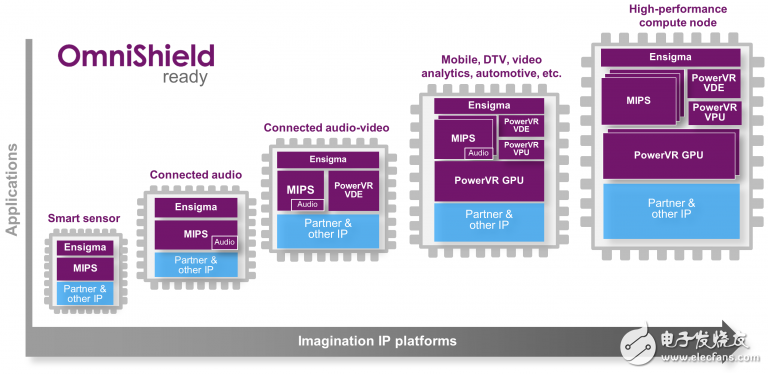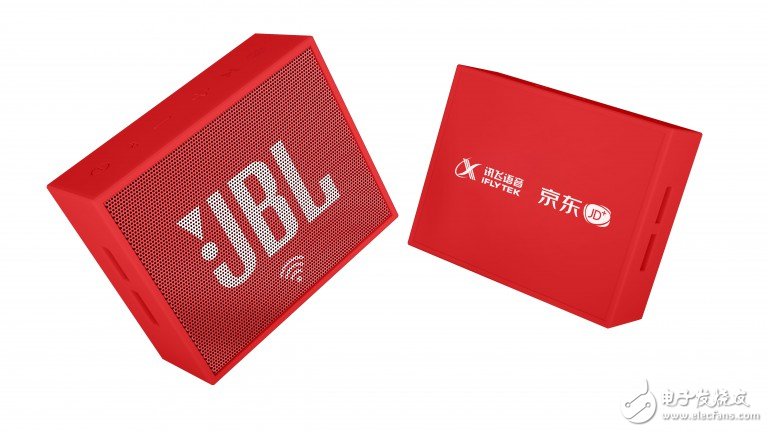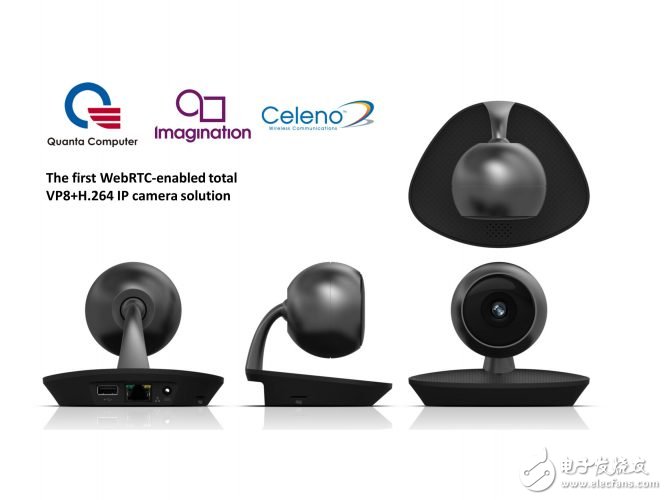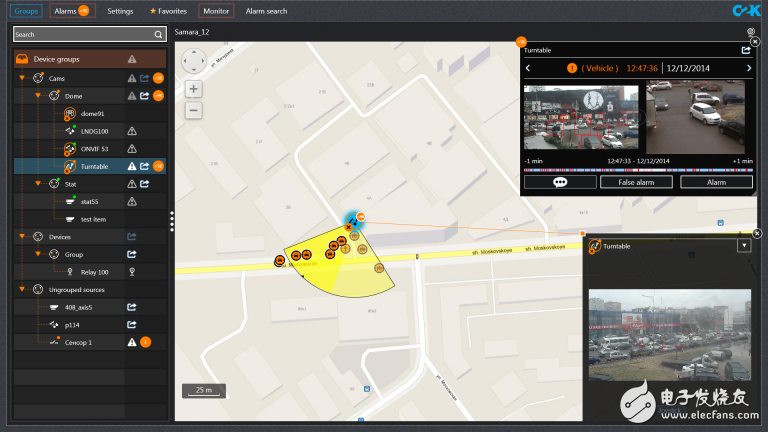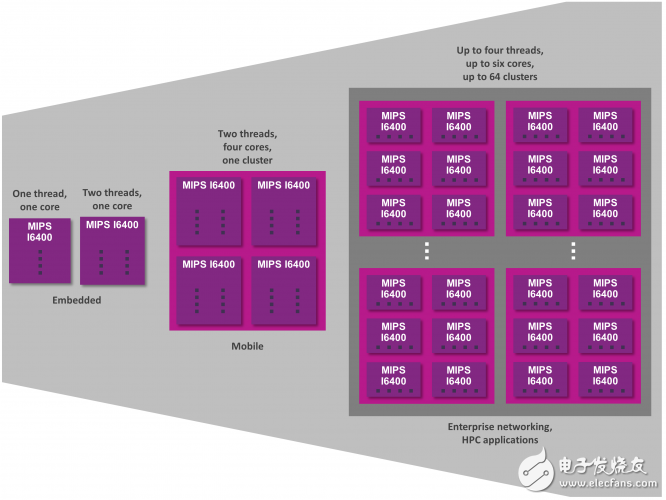The Internet of Things is a fast-growing industry that creates a connected world that allows for free interoperability between billions of devices and between devices. For the estimation of the number of IoT devices in 2020, the attitudes of the parties are different. For example, Linli Group conservatively estimates that the number is 6 billion, while the data provided by Intel is 200 billion. The Internet of Things market is full of business opportunities, and in another article I will discuss the Internet of Things market. In this article, I will focus on new IoT devices that integrate sensors, processors, and connectivity, including wearables, mobile or home entertainment devices, and connected cars, smart agriculture, energy, medical, and other M2M applications. The type of processor deployed inside the connected device is largely affected by the type of sensing required by the target application. For example, some devices only perform limited processing on data sets such as temperature, humidity, pressure, or gravity, while more complex systems require processing of high-resolution sound or video streams. Recently, many consumer and industrial IoT devices have re-enabled semiconductor products that were originally designed for the mobile or embedded applications market. It is becoming increasingly clear that the IoT market is subdivided into five broad categories (see below). So in multiple market segments, customizing SoCs for each different IoT device category is more advantageous than reusing old solutions. Although the individual requirements of the SoC are completely different, there are two general trends overall. First, because most IoT devices require some form of wireless connectivity, it has become common practice to integrate wireless basebands on-chip. By integrating multiple communication standards such as Wi-Fi, Bluetooth or cellular data on the Soc, the overall BOM cost and power consumption will be significantly reduced, making the battery life of more available devices longer. Second, hardware security at the system level allows the created technology framework to withstand the test of the future, which is what IoT devices need to ensure that sensitive data and applications for consumers and companies will not face risk. Let's take a closer look at the five major types of IoT devices. Smart sensors and low-power M2M applications The smart sensor is actually connected to the microcontroller, integrating a variety of analog interfaces for sensing. CPU performance requirements are typically 50 to 100 DMIPS, while connectivity includes energy-saving standards such as low-power Wi-Fi (802.11 n or 802.11 ah), smart Bluetooth, low-power cellular (such as Cat-M LTE) or 802.15.4 Agreement (such as ZigBee, Thread, 6LoWPAN, Z-Wave, etc.). Standing Egg designed a MIPS-based MCU for sensor fusion and M2M applications Connect audio and video Connecting audio is also a large type of IoT device, ranging from Bluetooth-based speakers to high-end home theater systems such as sound bars. Due to different target applications, the CPU needs to be processed from a high-performance MCU of 300~500DMIPS to an application processor of 1000DMIPS area priority. In terms of connectivity, most wireless audio applications have integrated Bluetooth devices (classic or smart) and Wi-Fi. JBL Go Smart is a MIPS-based connected speaker Whether to choose a specific 802.11 protocol depends on the target application. For example, a connected speaker similar to Amazon Echo Dot does not require 802.11 n Wi-Fi. For more complex setups (multi-space, multi-channel Dolby Atmos, home theater), 802.11ac is required to ensure adequate bandwidth for the entire mesh network. A connected video clip is a device similar to Chromecast and a connected camera for video streaming or an IP camera for video recording. IP cameras usually have a basic UI, so there is no need for an embedded GPU that can render 3D images. Quanta WebRTC IP camera supports VP8 and H.264 encoding and integrates MIPS CPU The internal structure of the IP camera chip looks very similar to the connected audio SoC - the only significant difference is the integration of the video engine on the chip and the wireless connection interface (such as Ethernet). At the same time, the wireless display is the terminal interface, which only shows the surface of a more complex smart device. High performance computing device Multimedia devices require an application processor that handles the full range of processing power required for today's complex work, requiring integrated multi-core CPUs, powerful 3D graphics, multiple standard video encoders and decoders, and a full range of Connectivity. As with the above categories of devices, the specific configuration of each chip depends on the specific application. For example, most video analytics platforms localize data before sending it to the cloud. Therefore, these systems require a very powerful and highly integrated multimedia pipeline that should have multi-core GPUs or specialized vision hardware capable of handling advanced artificial intelligence algorithms. For example, a smart camera SoC can cover high-speed wireless networks (such as 802.11 ac 2 & TImes; 2). However, for ADAS applications, V2X-based cellular communication (802.11p) is the best choice. Video analysis with ELVEES ELISE SoC (MIPS + PowerVR + Ensigma integrated on chip) For connected home devices with high-resolution display and rich UI, an appropriate trade-off must be made between processing requirements, power consumption, and cost. For example, for smart TVs and set-top boxes, the cost of the entire system is one of the main drivers. For this type of product, an area-efficient image-oriented GPU may be more appropriate, as well as multi-core CPUs or wireless processors. If system designers can integrate digital TV and wireless connectivity into a single SoC-ready solution, they can significantly reduce costs and eliminate the need to purchase dedicated chips for each protocol. On the other hand, wearable device SoCs are designed to minimize power consumption. Depending on the target market and instance, the wearable device can be configured as a standalone device or attached to a smartphone, so system designers are faced with many important system choices. This means narrowing the wireless standard to Bluetooth, Wi-Fi and LTE, and adopting CPU and GPU configurations to optimize power consumption. Ingenic M200 is an ultra-low power wearable device chip based on MIPS High-density computing nodes are a hotter category recently. Target applications include green computing systems (such as networking and storage systems, cloud computing or large-scale data centers) that must deliver superior performance in a powerful enclosure. High-density computing nodes are heterogeneous CPU architectures Typically, a high-density compute node is defined as a more specialized architecture that integrates multi-core CPUs and other hardware accelerators (such as GPUs, DSPs, FPGAs) for compression, data filtering, and other complex algorithms. This article won't focus on SoCs, but I want to emphasize multi-core CPUs with specific features: hardware multithreading. Designers of compute node SoCs typically start each thread in each CPU before starting multicore, which can deliver better performance. This heterogeneous CPU computing solution can significantly improve area efficiency and efficiency. to sum up The Internet of Things will create new business models that address the global challenges we face today. The scalable solution is designed for IoT devices and systems and provides solutions to some typical problems, such as managing wireless communication bandwidth to balance control and data transfer needs, providing sufficient local processing resources to enrich the graphical user interface or Video and image processing, control energy consumption and efficiency, and ensure a certain level of network and data security. Wholesale Blockchain Miners Are you still looking for blockchain miners,You can buy blockchain miners on the Bossgoomall website. Our products mainly include t-shirts,cheap t-shirts,men's clothing,cheap tool parts,tools, etc. Being an excellent wholesale marketplace, resellers can effortlessly buy blockchain miners from us and get the best deals, as well as free shipping on hundreds of thousands of items. There are hundreds of brands on Bossgoomall, you can buy with confidence.Here you can purchase all sorts of tool parts and t-shirts and cheap t-shirts and men's clothing. You will definitely find the product you want on Bossgoomall. T-shirts,Cheap T-shirts,Men's Clothing,Cheap Tool Parts,Tools,Tool Parts Consumer Electronics > Blockchain Miners > Blockchain Miners